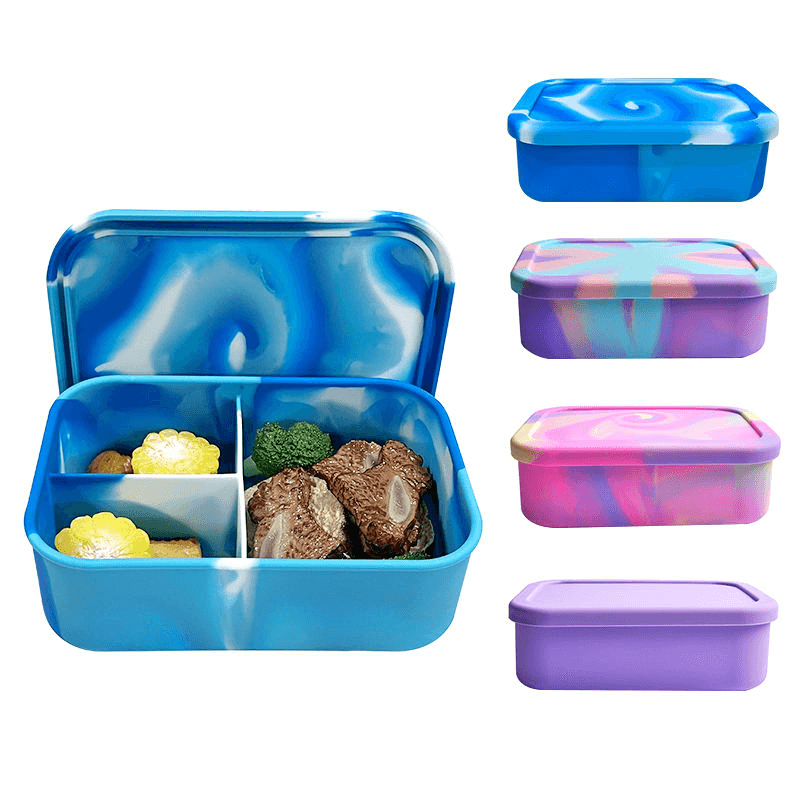Contents
Which Lunchbox Material Is Best? A Complete Guide to Plastic, Glass, Silicone & More
Choosing the right lunchbox goes beyond just appearance. With a wide range of materials available—plastic, stainless steel, glass, silicone, and bamboo—understanding their differences is key to finding the best option for your needs.
Whether you’re packing meals for school, work, or outdoor activities, factors such as safety, durability, microwave compatibility, and eco-friendliness play an important role.
Key Factors When Choosing a Lunchbox
Before diving into the comparison, here are essential features to consider when selecting a lunchbox:
Hygiene – Is the material easy to clean and resistant to bacteria?
Durability – Will it last with daily use, falls, or high heat?
Versatility – Can it go from freezer to microwave or oven safely?
Weight – Is it light enough to carry daily?
Safety – Is it BPA-free, food-grade, and non-toxic?
Environmental Impact – Is the product recyclable or biodegradable?
Cost – Are you prioritizing budget or long-term value?
Lunchbox Material Comparison Table
| Material | Pros | Cons | Microwave Safe | Dishwasher Safe | Recyclable |
|---|---|---|---|---|---|
| Plastic | Cheap, lightweight, widely available | May release chemicals; not eco-friendly; can degrade over time | Not recommended | Yes | Limited |
| Glass | Non-toxic, does not leach; stylish; fully recyclable | Fragile, heavy; not ideal for kids | Yes | Yes | Fully |
| Stainless Steel | Extremely durable; hygienic; non-toxic; reusable | Not microwave safe (unless specially designed); heavier than plastic | No (usually) | Yes | Fully |
| Silicone | Flexible; lightweight; BPA-free; leakproof and durable | Requires industrial recycling; not biodegradable | Yes | Yes | Limited (special facilities) |
| Bamboo | Lightweight; made from renewable resources | Often contains melamine resin; not microwave safe | No | Hand wash recommended | No |
Why Silicone Lunchboxes Are Gaining Popularity
Among all the materials, silicone lunchboxes offer a practical balance between safety and usability. Made from 100% food-grade silicone, they are:
Non-toxic and BPA-free, suitable for kids and adults
Microwave, dishwasher, freezer, and oven safe
Shock-resistant and foldable, ideal for on-the-go lifestyles
Leakproof and odor-resistant, perfect for both solid and liquid meals
While silicone is derived from petrochemicals, it does not emit microplastics like plastic, nor does it leach chemicals into food. Its durability also means fewer replacements over time, reducing long-term waste.
To dispose of silicone responsibly, look for specialized recycling facilities that accept silicone rubber. Though not as widely recyclable as glass or steel, silicone outperforms plastic in safety and longevity.
![]()
![]()
Final Thoughts: What’s the Best Lunchbox Material?
The best lunchbox material depends on your lifestyle:
For durability and hygiene: Choose stainless steel
For heating convenience: Go with glass or microwave-safe silicone
For kids and daily use: Silicone is lightweight, safe, and flexible
If on a budget: High-quality, BPA-free plastic may work temporarily
Avoid low-grade plastic containers, especially when heating food, as they may release harmful compounds over time.
Why Choose Jewelives’s Silicone Lunchboxes?
Jewelives is a certified silicone manufacturer with 21 years of experience producing BPA-free, food-grade silicone bento boxes and lunch containers. Our products are:
Tested for international standards including FDA, LFGB, and EU food safety regulations
Microwave, dishwasher, and freezer safe
Available in over 100 patented designs including foldable, fun, and functional styles
Our factory supports both OEM and ODM services, helping brands develop customized silicone food containers for global markets. With state-of-the-art equipment and a professional R&D team, we ensure quality, innovation, and safety in every lunchbox.
Contact us today to request samples or discuss custom product development.


